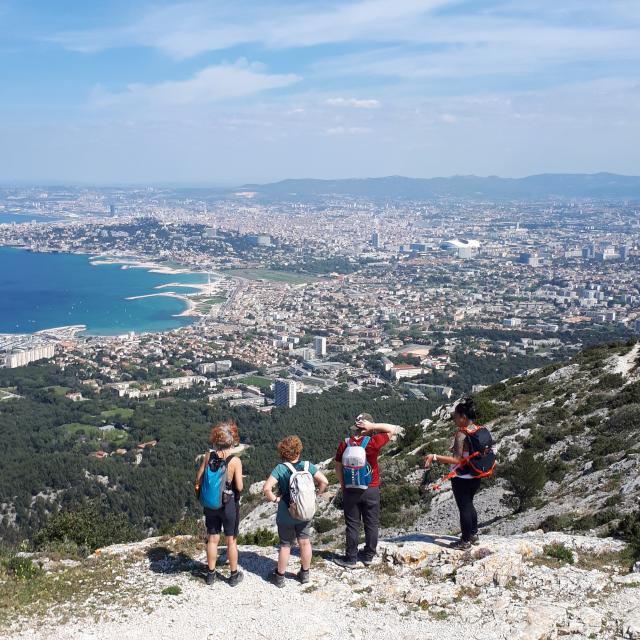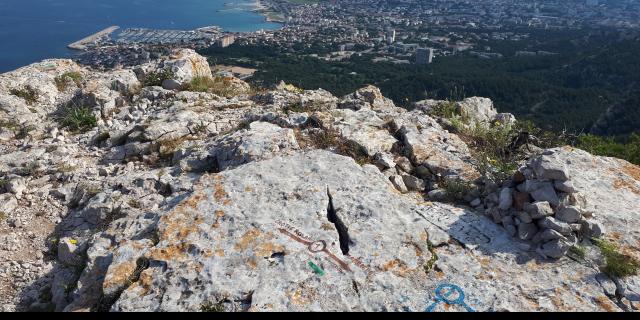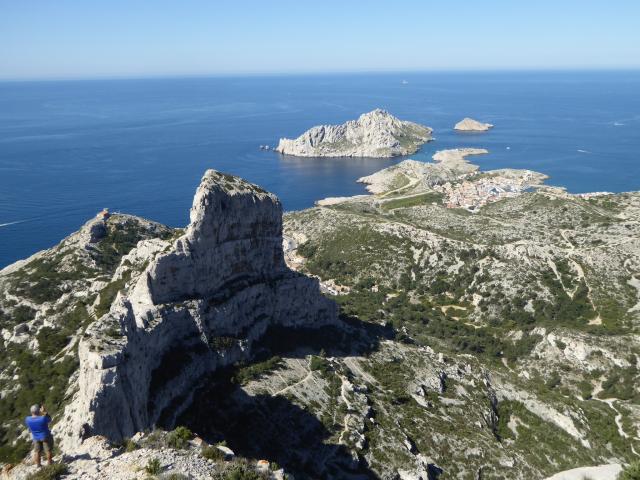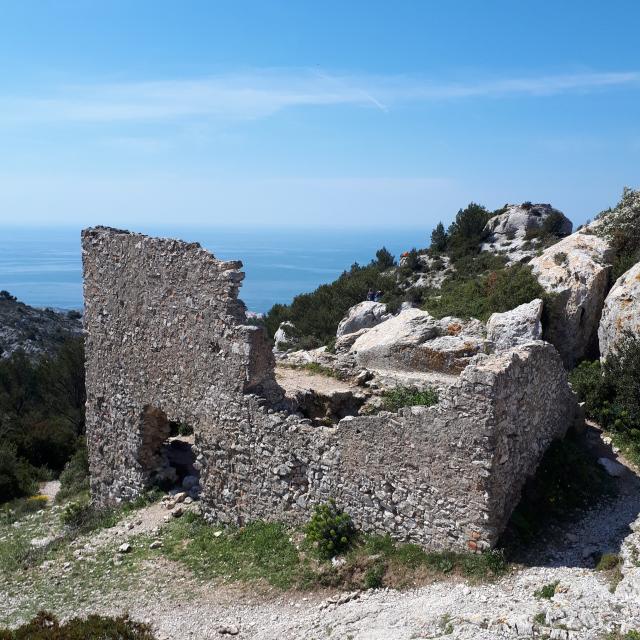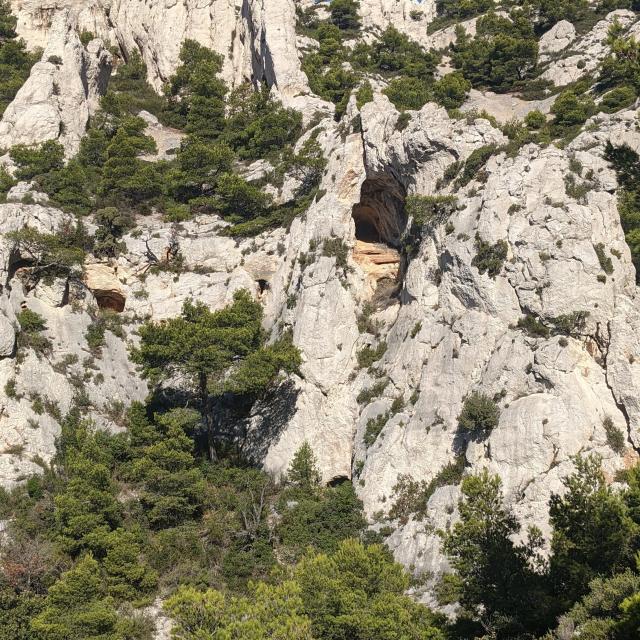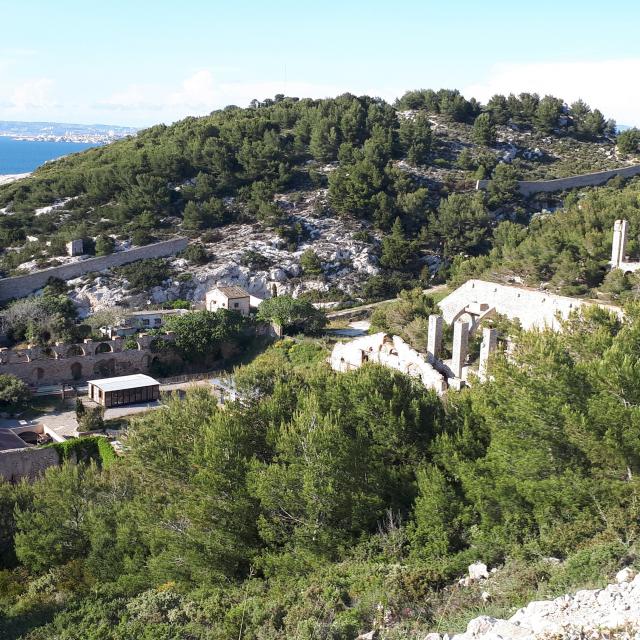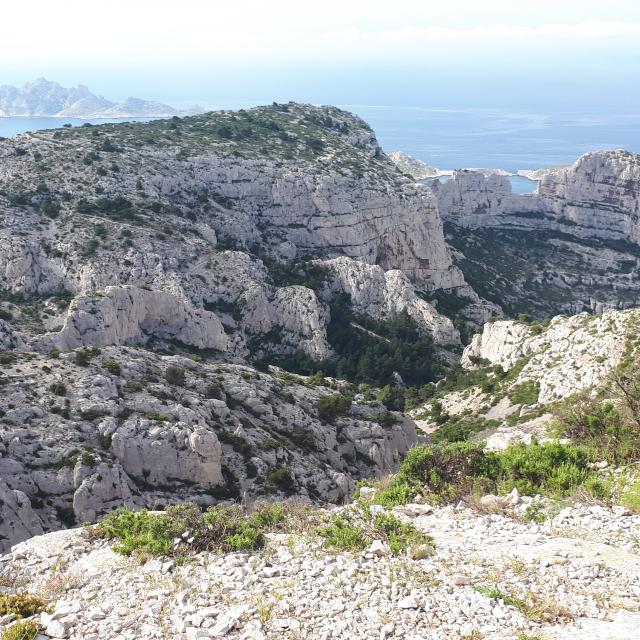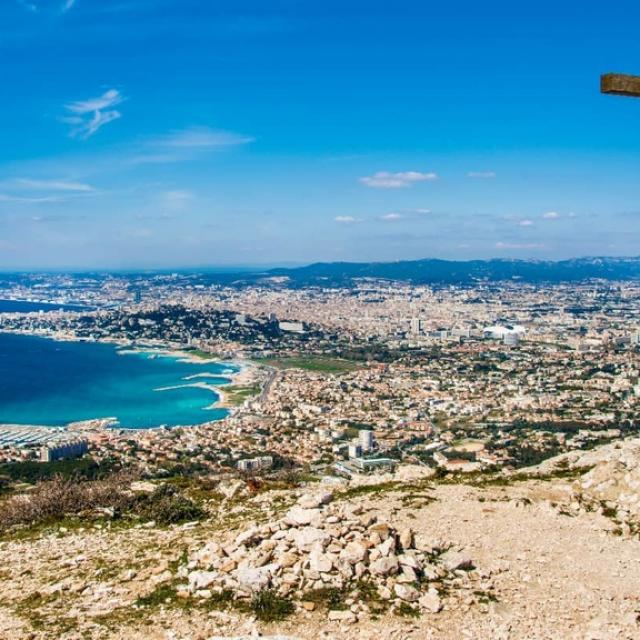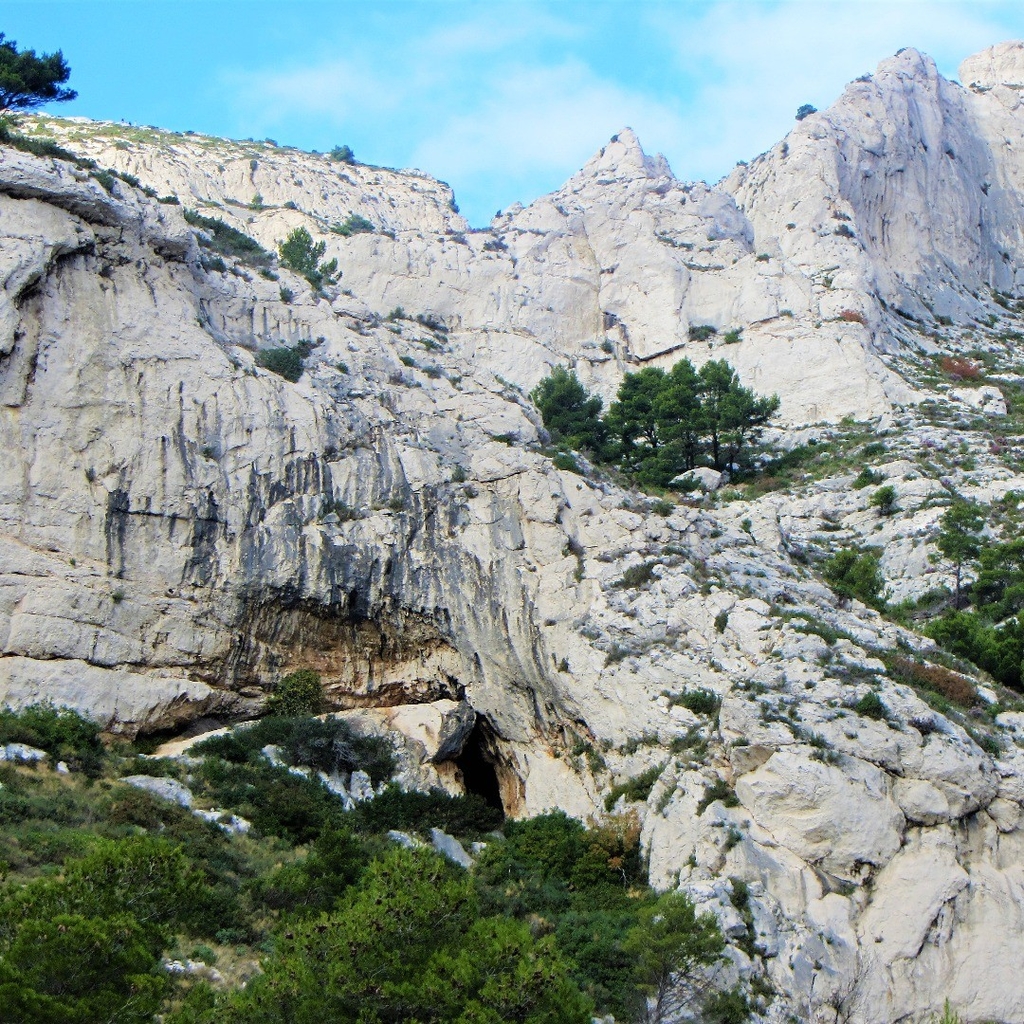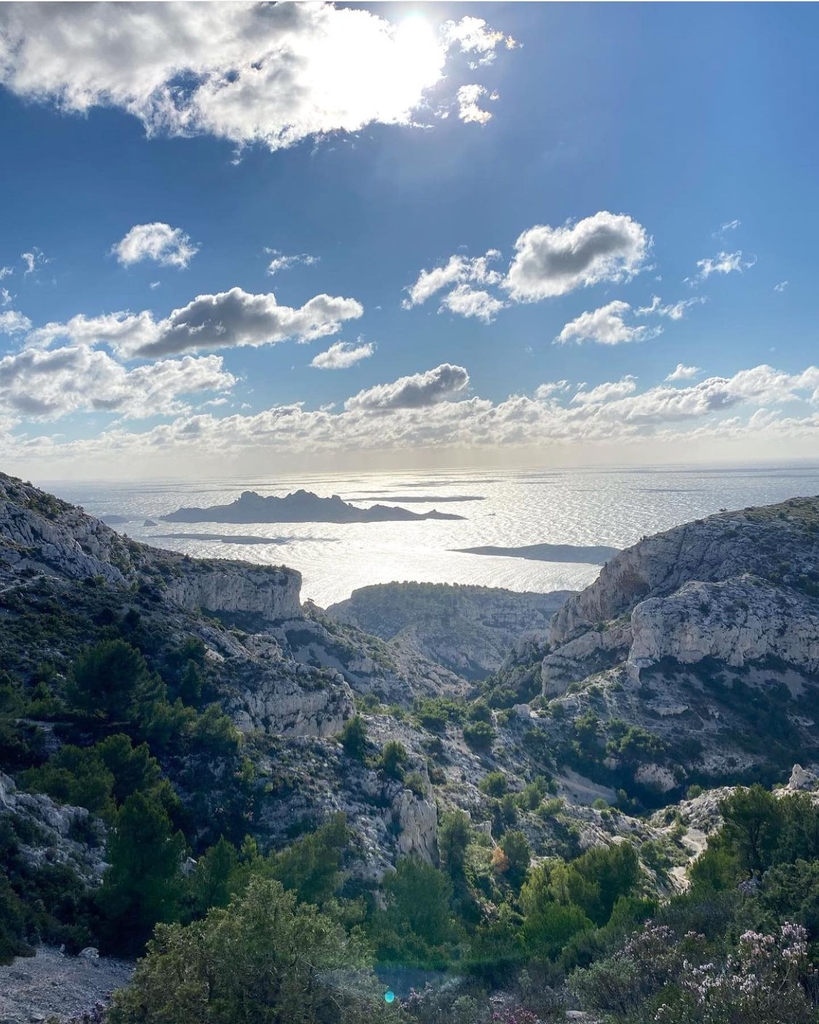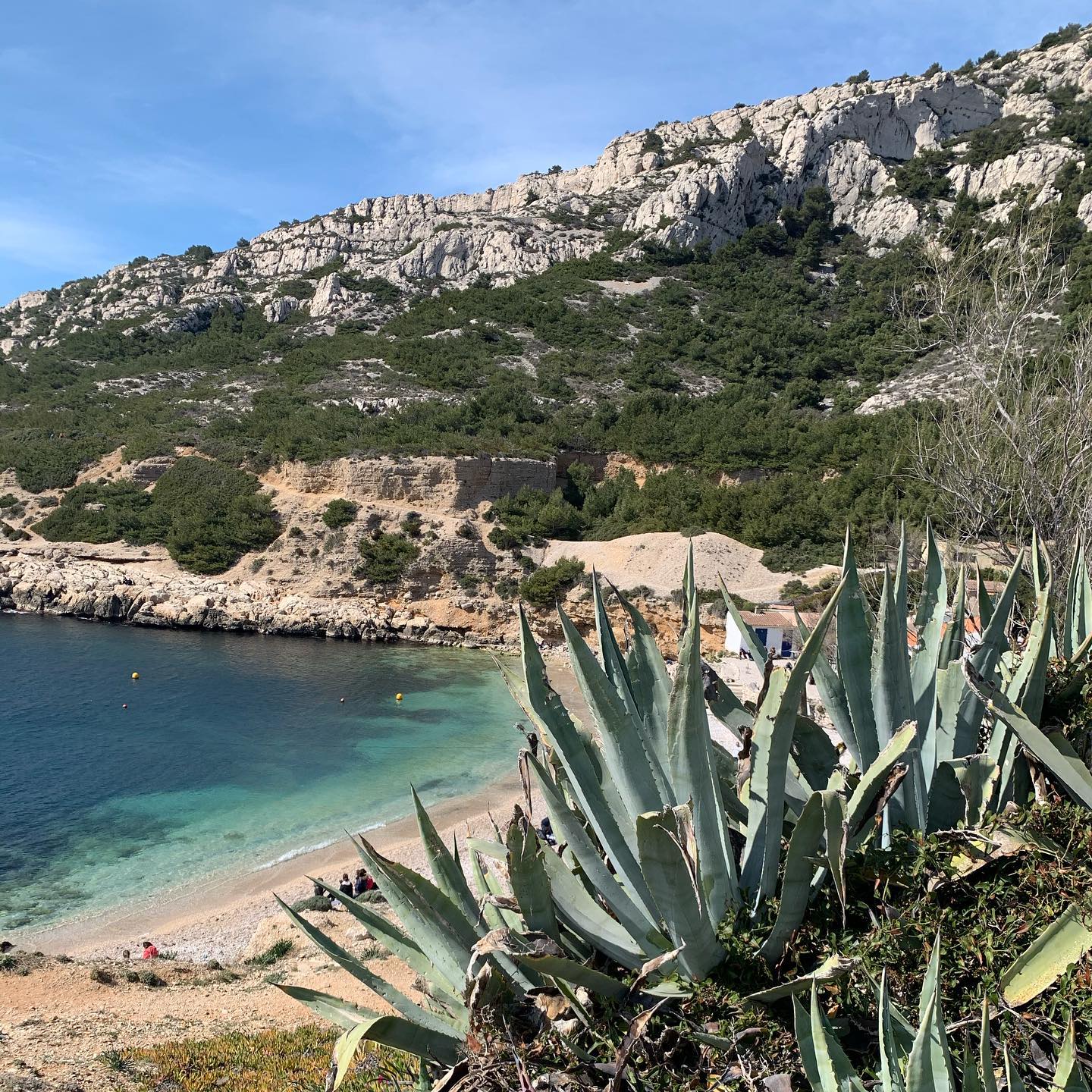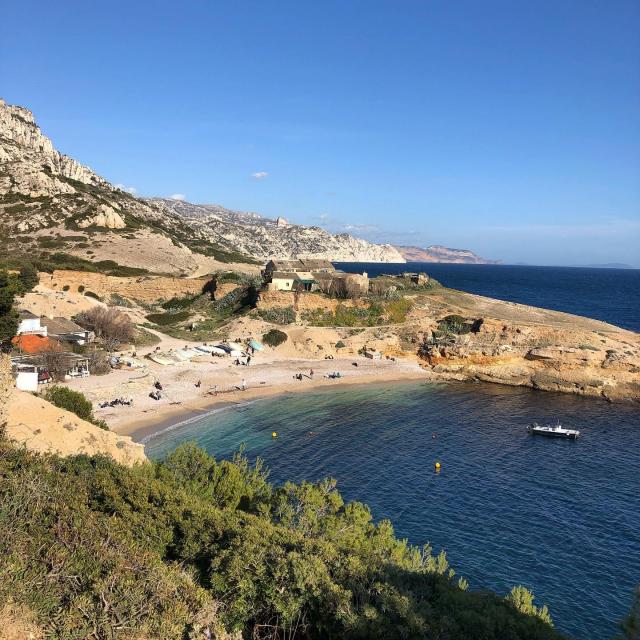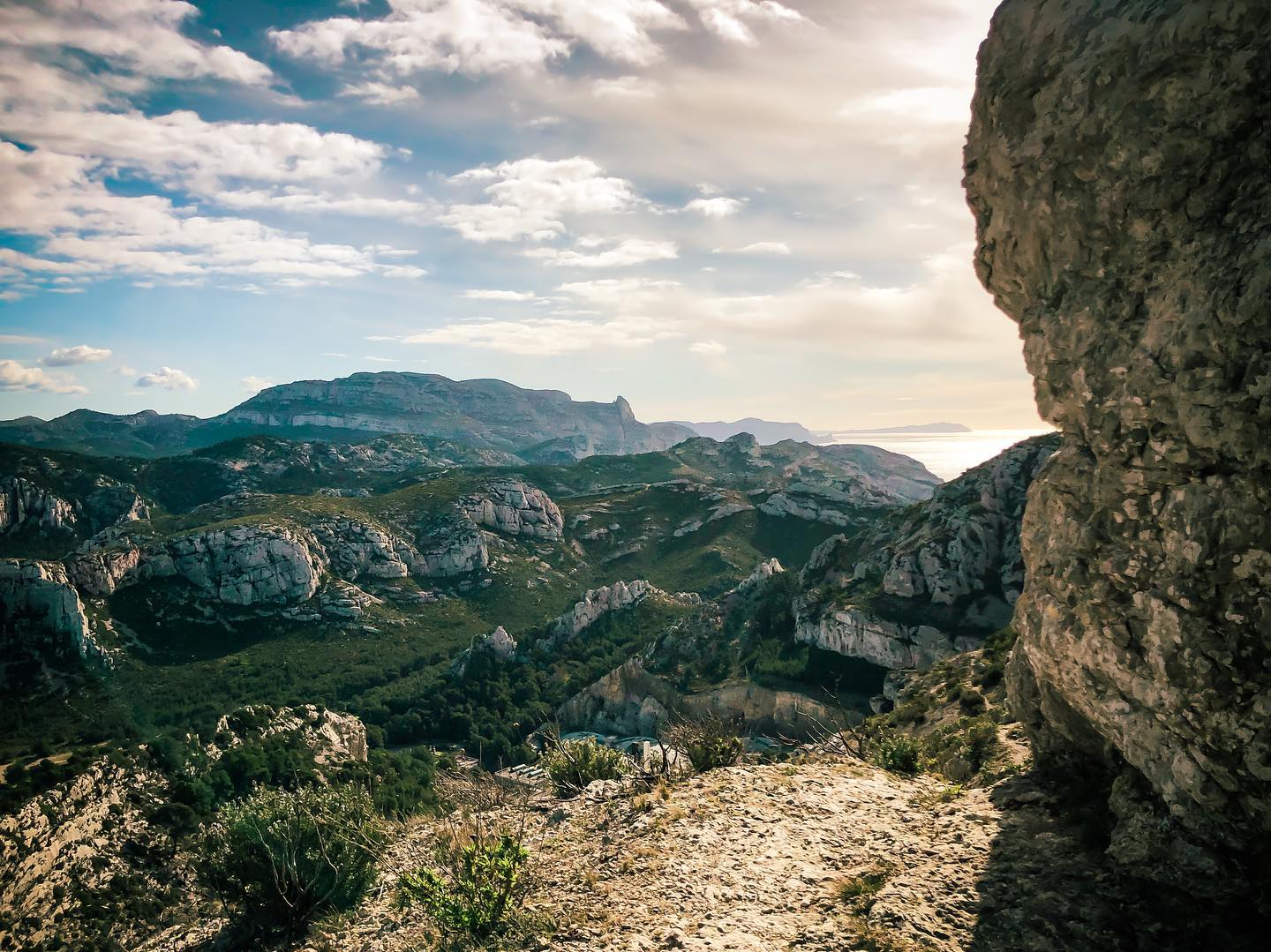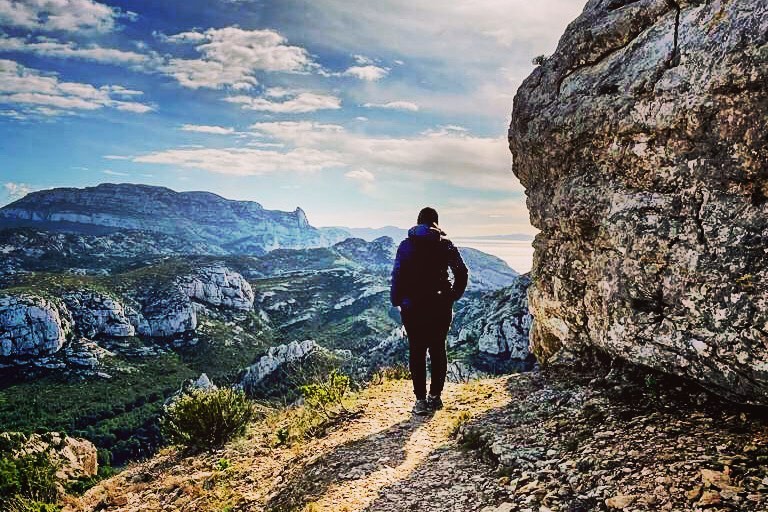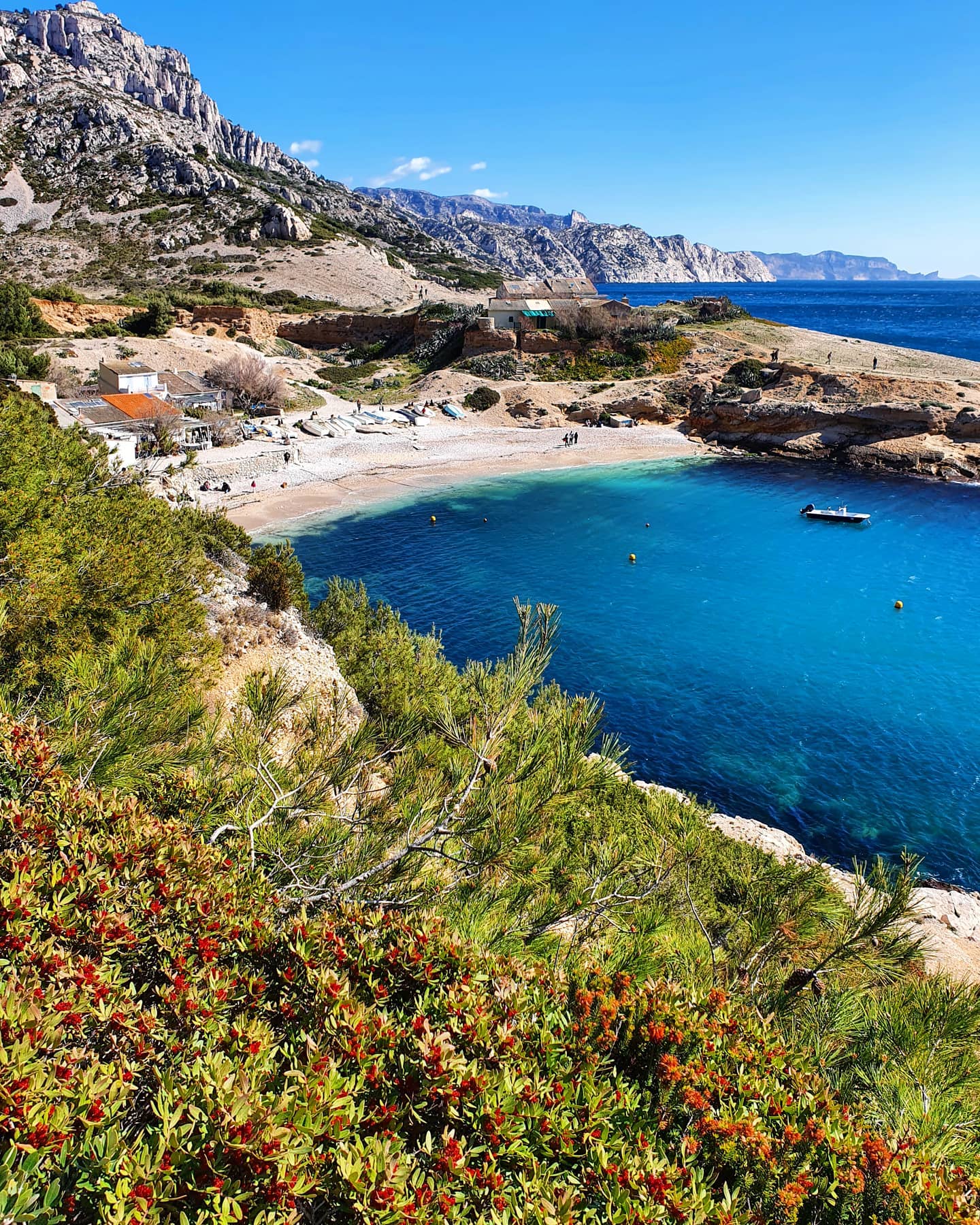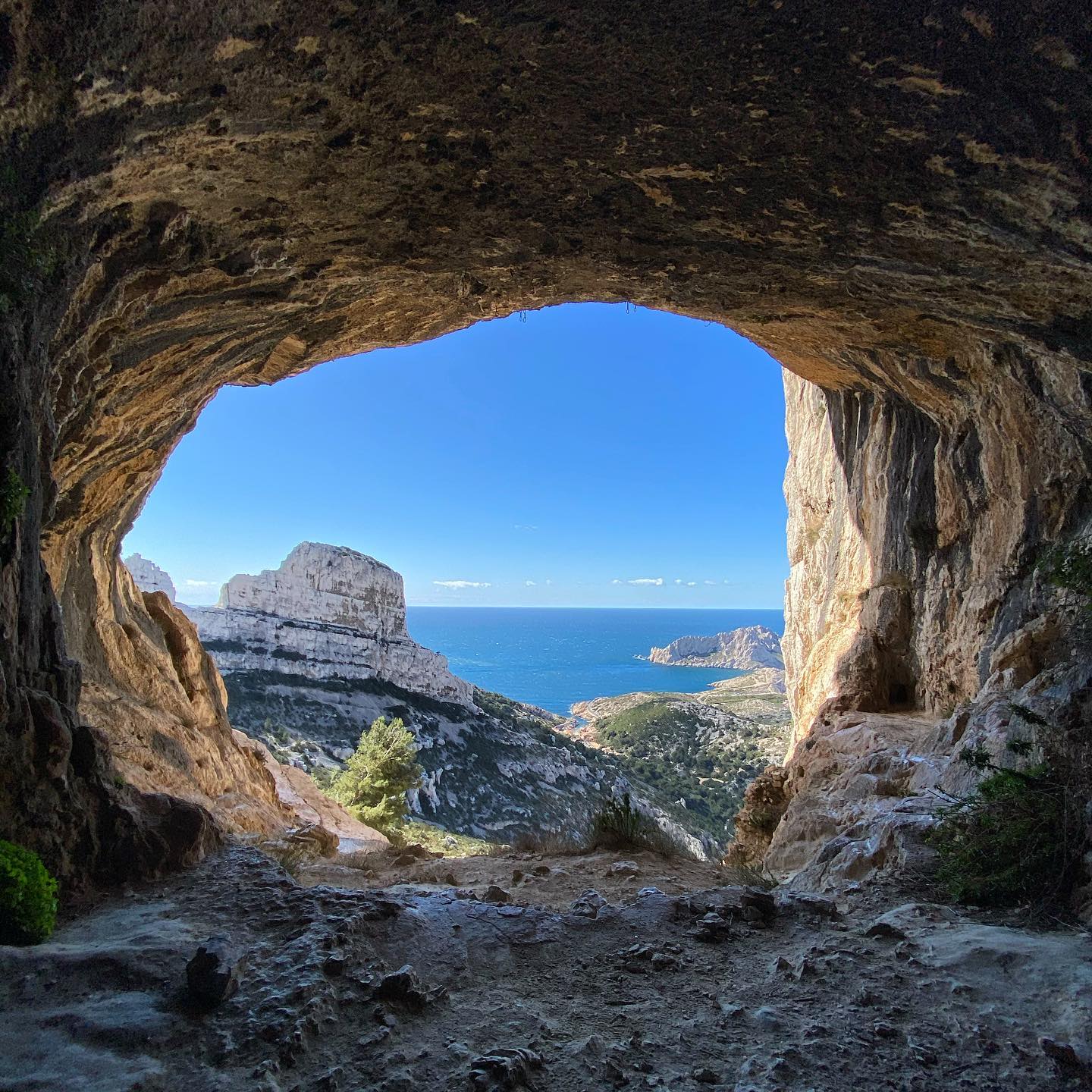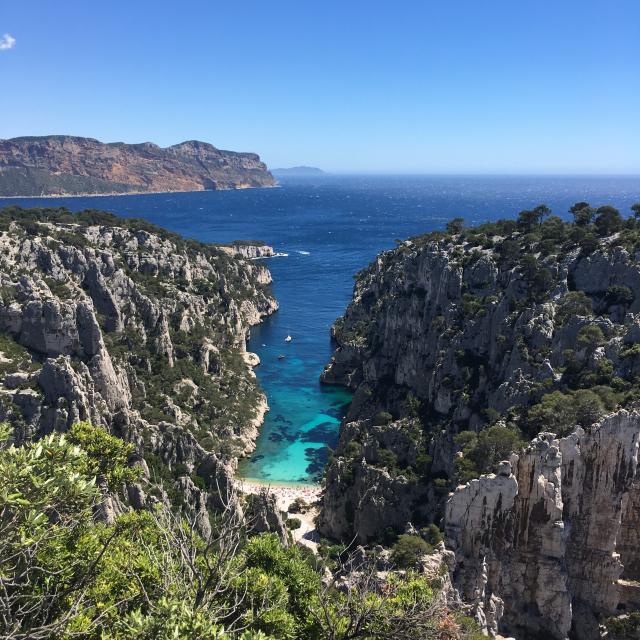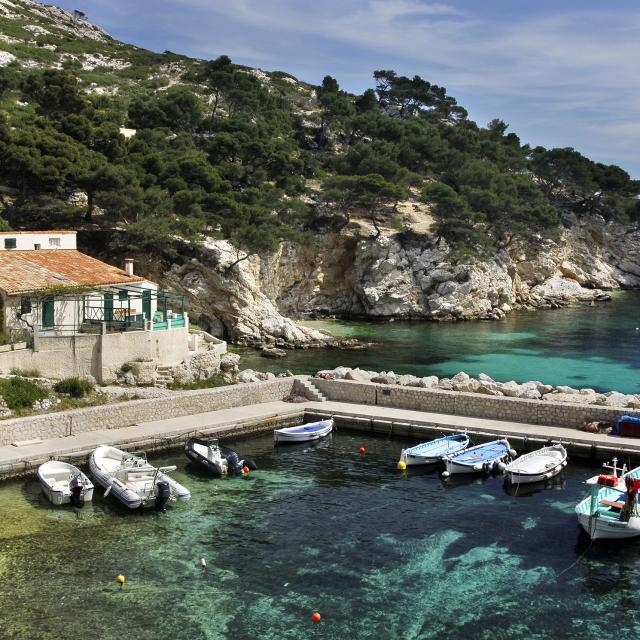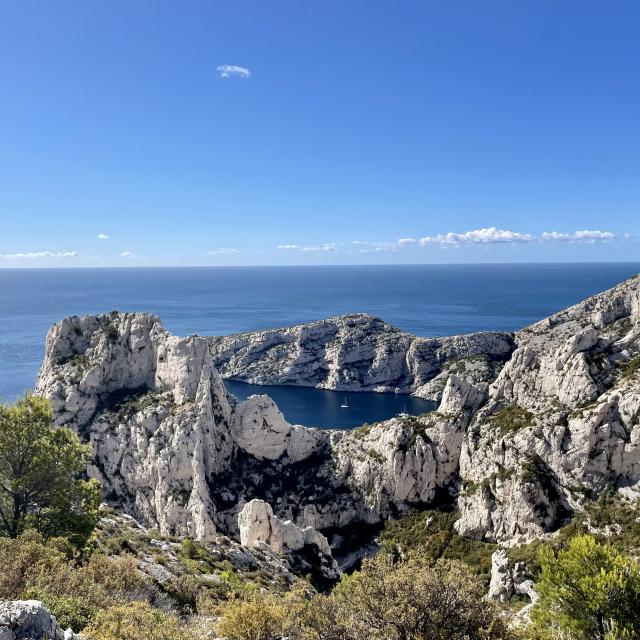Discover the Massif of Marseilleveyre
Its territory
When you leave the town centre and walk along the Corniche to reach the Calanques, you can see the Dead Man’s Plateau, the summit of Marseilleveyre (432m) and Béouveyre (366m). All of this forms the Marseilleveyre massif, which extends for about ten kilometres and dominates the coastline between Cap Croisette and the Sugiton cove. Beyond this, we then pass over the relief of Mont Puget. It is a real rocky bar that marks the break between the city and the natural area.
The origin of the name
The expression “veyre”, which can be found in the names Marseilleveyre and Béouveyre, comes from the Provençal verb “to see”. And no matter which summit is reached or which path is taken, as soon as you climb up, you will enjoy a beautiful panoramic view of the city, the relief below, the islands and the sea.
A varied landscape
In addition to the beautiful, unobstructed view, the Marseilleveyre massif allows you to discover some remarkable geological formations. For example, there is the Dead Man’s Plateau and its karstic surface where it is important to look carefully when you put your feet down, as the holes are so omnipresent on the ground. We also find pierced rocks, such as those of the 3 arches in the Malvallon or the vertiginous Pas de la Demi-Lune. Not forgetting the numerous caves: Saint-Michel d’eau douce, l’ours, l’ermite, du déserteur, du bandit Rolland, but beware, not all of them are accessible anymore. An ideal playground for sportsmen, whether they are hikers, trail runners or climbers.
